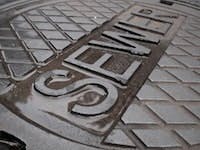INDA, the Assn. of the Nonwoven Fabrics Industry, the National Assn. of Clean Water Agencies (NACWA), the Water Environment Federation (WEF), and the American Public Works Assn. (APWA) have agreed to work together to reduce the burden of non-flushable disposable products in the wastewater system. These products have been linked to expensive clogging issues for utilities and can potentially lead to costly sewer back-ups in communities and households across the country. The associations believe that rigorous product assessment before making a flushable claim, along with improved product labeling, would significantly reduce the amount of non-flushable items in the sewer system.
“The problems in the sewer system are caused by the flushing of products that don’t properly break apart in the sewer system – products such as baby wipes, personal care wipes, paper towels, and feminine care products. These products are sometimes disposed of in toilets because of how and where they are used, causing significant economic burdens on local wastewater treatment systems,” says NACWA Director of Regulatory Affairs, Cynthia Finley.
To assist companies with product flushability assessments and to provide guidance on proper labeling, INDA and its European counterpart, EDANA, recently released a Code of Practice for manufacturers and marketers of wipes and other disposable nonwoven products that includes a detailed decision tree to determine the proper labeling of a product. Before a flushable claim can be made for products intended to be flushed, the product should be subjected to the seven rigorous tests found in INDA’s/EDANA’s newly released 3rd Edition Guidance Document for Assessing the Flushability of Nonwoven Disposable Products. If a product is not designed to be flushed, but used in a manner where the consumer might flush it nonetheless, then the Code of Practice prescribes that the product packaging should display the Do Not Flush logo prominently and of a minimum size or larger. INDA’s research indicates that 94% of people who were shown the Do Not Flush logo knew what it meant even if they had never seen it before.
The 3rd Edition Guidance Document for Assessing the Flushability of Nonwoven Disposable Products, the Code of Practice and Do Not Flush logo may be downloaded free of charge.
Source: NACWA

